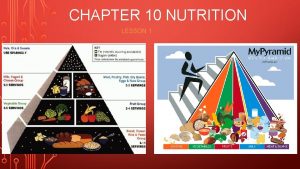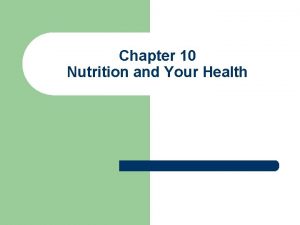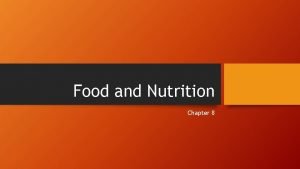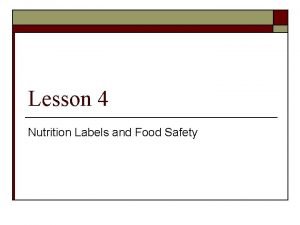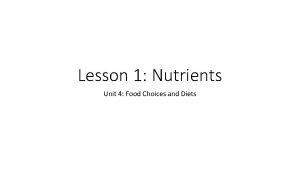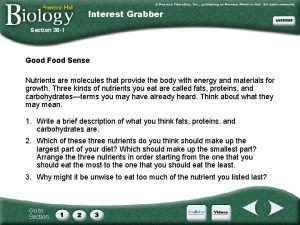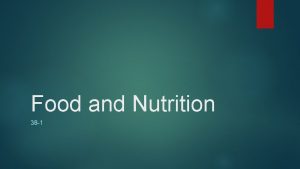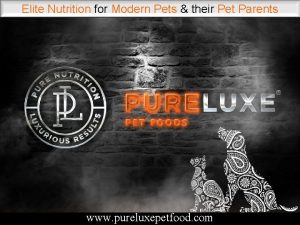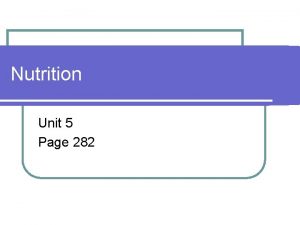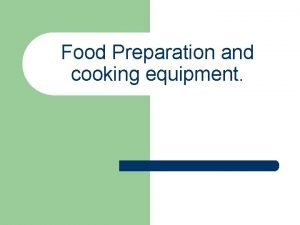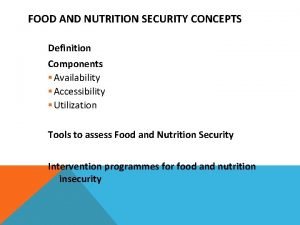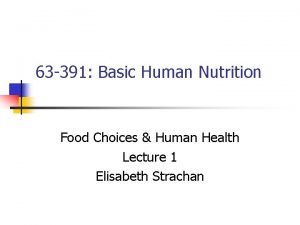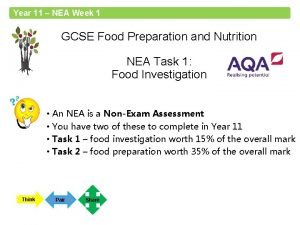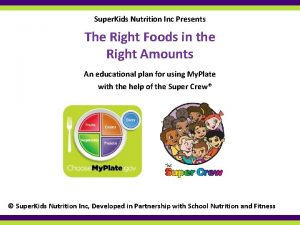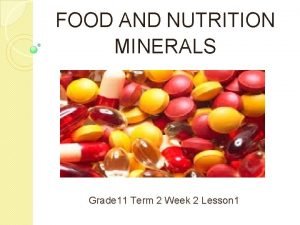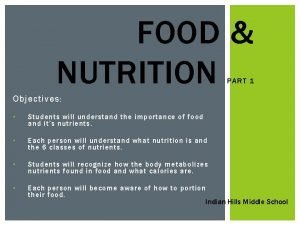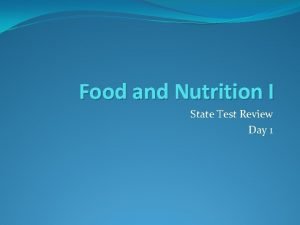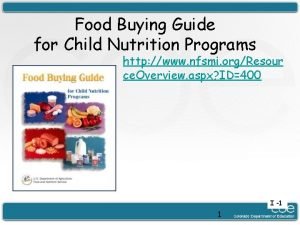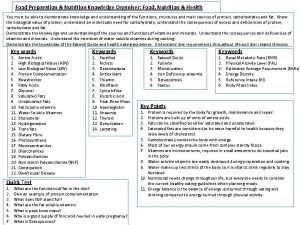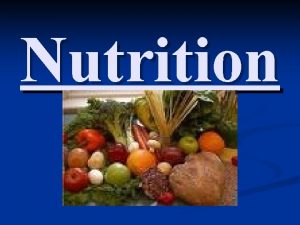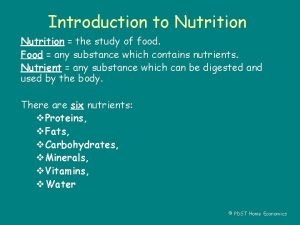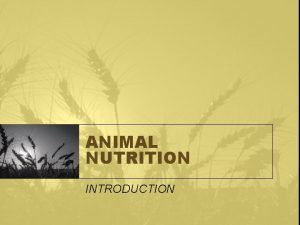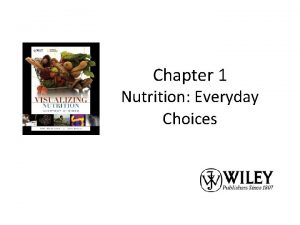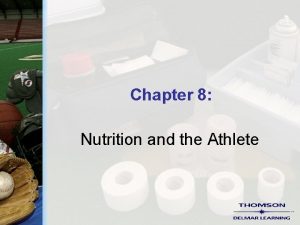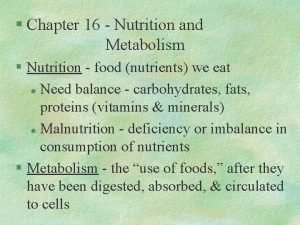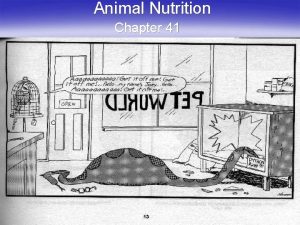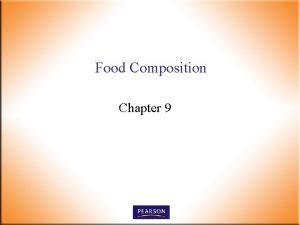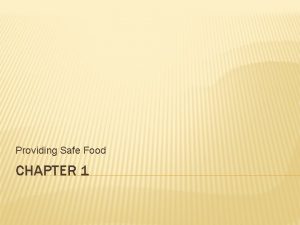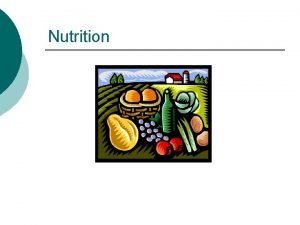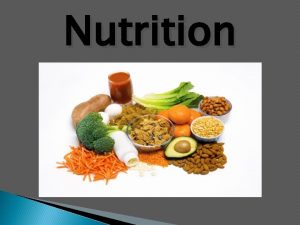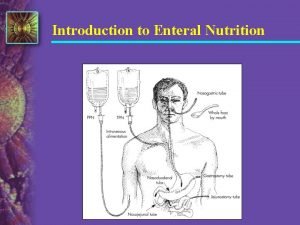Chapter 8 Nutrition 46 NUTRITION Study of food

































- Slides: 33

Chapter 8: Nutrition


46 NUTRITION Study of food and the way the body uses it to produce energy and build/repair body tissue.

47 Kilocalorie • Unit of fuel potential in food. • aka kcal or calorie • Average adult requires around 2000 calories per day • Excess calories stored by the body as fat

46 Essential Nutrients • Nutrients the body cannot produce in sufficient quantity for its needs

• proteins • carbohydrates • fats • vitamins • minerals • water


48 Protein • Important component of muscle, bone, blood, enzymes, cell membranes, hormones • requirement depends on growth, illness, diet

48 Protein • 10 -15% of total calories should come from protein • Has 4 calories per gram

Sources: meat, fish, poultry, eggs, milk, cheese, beans, peas, nuts

49 Fats • Most concentrated source of energy –has 9 calories per gram • Help absorb fat-soluble vitamins

• gives food taste • satisfies hunger • US diet needs to drop to 30% total fat • hidden in many processed foods

3 main types of fats from foods • saturated • monounsaturated • polyunsaturated No more than 10% of diet should be saturated fat (solid at room temp).

50 Fat Fact Fats make up 34% of average American diet (5 tablespoons per day)

CARBOHYDRATES • carbon, hydrogen & oxygen compound • primary fuel source

CARBOHYDRATES • provide 4 calories per gram • Supply energy to cells, especially during highintensity exercise

51 • Simple carbohydrates provide sweetness • Complex carbohydrates provide starch and most dietary fiber

51 • 55% of total calories should come from carbohydrates • Americans need to consume more unrefined complex carbohydrates


53 Minerals • Minerals - inorganic compounds • help regulate body functions • 17 essential minerals

• macro (major) minerals--100 mg--calcium, phosphorus, sodium, potassium. . . • micro (trace) minerals--iron, copper, zinc, selenium, manganese. . .

Vitamins - organic substances • required in very small amounts to help chemical reactions • absorbed into bloodstream (better from natural sources) • antioxidants help preserve body’s healthy cells

• Water soluble (B, C, folic acid) • Fat soluble (A, D, E, K) • toxicity reported with mega doses

WATER • regulates body temperature, contributes to cell processes and structure of the body • Need 1 quart for each 1000 calories.

WATER • Comes from food, beverages and oxidation • Pure form is best!

FIBER • indigestible part of plants-soluble and insoluble • current American diet needs to double intake of fiber to 23 -35 gm

DISEASE PREVENTION • manage diabetes and high blood cholesterol • helps in weight control • low in calories, take longer to chew • prevent conditions arising in the intestinal tract

HIGH FIBER FOODS §Fruits §legumes §oats §cereals §grains §vegetables

FOOD GUIDE PYRAMID • • • sparingly: fats and oils 2 -3 of milk yogurt cheese 2 -3 of meat, poultry, beans. eggs 2 -3 of fruits 3 -5 of vegetables 6 -11 servings bread, cereal pasta, rice

54 Dietary Guidelines • Eat a variety of foods • Balance foods you eat with physical activity

54 Dietary Guidelines • Choose plenty of grain products, vegetables, and fruits • Choose a diet low in fat, saturated fat, and cholesterol

54 Dietary Guidelines • Be moderate in consumption of sugars • Choose a diet moderate in salt and sodium • Drink alcohol moderately, if at all

 Chapter 10: nutrition for health lesson 1 answer key
Chapter 10: nutrition for health lesson 1 answer key Chapter 10 lesson 4 nutrition labels and food safety
Chapter 10 lesson 4 nutrition labels and food safety Chapter 8 food and nutrition
Chapter 8 food and nutrition Unit 2 food food food
Unit 2 food food food Food chain food chain food chain
Food chain food chain food chain Cyq qualifications
Cyq qualifications Illuminate aqa food preparation and nutrition
Illuminate aqa food preparation and nutrition Datingoo
Datingoo Food and nutrition unit 4
Food and nutrition unit 4 Section 38-1 food and nutrition answer key
Section 38-1 food and nutrition answer key Food and nutrition unit 4
Food and nutrition unit 4 38-1 food and nutrition
38-1 food and nutrition Extreme elite nutrition dog food
Extreme elite nutrition dog food Usda food and nutrition service
Usda food and nutrition service Food and nutrition unit 5
Food and nutrition unit 5 Advantages and disadvantages of labour saving devices
Advantages and disadvantages of labour saving devices Nutrition security definition
Nutrition security definition Chapter 38 digestive and excretory systems answer key
Chapter 38 digestive and excretory systems answer key Dri vs rda
Dri vs rda Nea2 food tech example aqa
Nea2 food tech example aqa Nutrition crew
Nutrition crew Food and nutrition grade 11
Food and nutrition grade 11 Food nutrition
Food nutrition Endosperm of wheat
Endosperm of wheat Food buying guide for child nutrition programs
Food buying guide for child nutrition programs Food and nutrition expo
Food and nutrition expo What is case series
What is case series Retrospective cohort study vs prospective cohort study
Retrospective cohort study vs prospective cohort study Work study definition
Work study definition Marty lobdel
Marty lobdel Phytogeographic regions of india
Phytogeographic regions of india Time study objectives
Time study objectives Time and motion study example ppt
Time and motion study example ppt Food chain consumer levels
Food chain consumer levels
